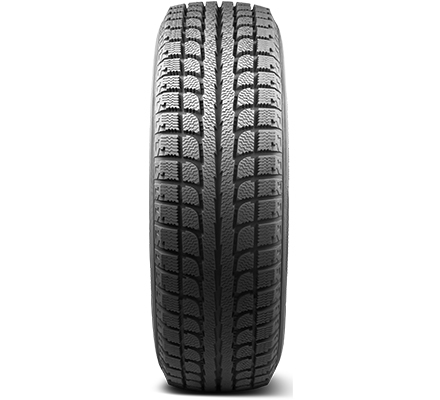Looking past flashy marketing and brand recognition, winter tire performance boils down to real-world capability. The Antares Grip 20 emerges from an unexpected corner of the market, challenging preconceptions about what makes a reliable winter tire.
Behind the scenes of mainstream tire manufacturers, engineering teams at Antares have been quietly perfecting their winter tire technology. The Grip 20 represents their focused effort to deliver cold-weather performance without the premium price tag typically associated with winter-specific rubber.
Dual-Ridge Design: Engineering Beyond Basics
The Grip 20’s center ridge configuration breaks from conventional winter tire design philosophy. Two parallel ribs, separated by an arrow-shaped drainage channel, form the tire’s backbone. This split personality serves multiple purposes beyond mere aesthetics.
The dual-ridge setup creates a balanced contact patch that maintains consistent grip at highway speeds. When plowing through fresh snow, these parallel ribs act like miniature plows, channeling loose snow away from the contact patch.
“I was skeptical at first, but these tires proved themselves in our heavy snowfall last season. The grip is consistent and predictable, which is exactly what you want in winter conditions.” — Mike R., SUV owner
Engineers gave special attention to the shoulder blocks, incorporating zigzag patterns that bite into packed snow. This aggressive shoulder design provides additional traction during cornering and lane changes.
Winter Warrior: Snow Performance Decoded
Deep winter testing reveals the Grip 20’s true character. The tire’s compound stays pliable in sub-zero temperatures, a critical factor often overlooked in winter tire design.
Here’s what sets the Grip 20 apart in winter conditions:
- wide arrow-shaped drainage channels actively prevent slush buildup;
- aggressive shoulder blocks maintain stability in deep snow;
- specialized rubber compound retains flexibility in extreme cold;
- continuous center ribs provide predictable straight-line tracking;
- multiple biting edges enhance grip on packed snow.
These features combine to create a tire that handles winter’s various challenges with surprising competence.
“After two full winters, I’m impressed by how well these tires handle both fresh snow and partially cleared roads. They’ve exceeded my expectations for a tire in this price range.” — Sarah K., daily commuter
Comfort Chronicles: Noise and Ride Quality
Road noise, often the Achilles’ heel of winter tires, takes an interesting turn with the Grip 20. The tire’s noise signature differs from typical winter rubber, producing a lower frequency hum rather than the sharp whine common to many winter tires.
Block spacing plays a crucial role in the Grip 20’s acoustic performance. Key attributes contributing to ride comfort include:
- optimized tread block sequencing;
- variable pitch pattern design;
- reinforced shoulder construction;
- balanced sidewall flexibility.
The resulting ride quality strikes a balance between winter grip and daily driving comfort.
Endurance Edge: Long-term Performance Review
Time reveals a tire’s true character, and the Grip 20 tells an interesting story after multiple seasons of use. Wear patterns emerge uniformly across the tread face, indicating good load distribution and alignment stability.
Block edge retention, a key indicator of long-term winter performance, remains sharp even after significant mileage. This suggests careful compound formulation that resists the typical softening and wear acceleration common to winter tires.
The shoulder blocks, despite their aggressive design, show remarkable resilience to chunking and tearing. This durability factor plays directly into the tire’s value proposition.
Beyond the Tread Pattern
Winter tires must balance competing demands: grip, durability, comfort, and cost. The Grip 20 takes an unconventional approach to this challenge, prioritizing real-world performance over marketing specifications.
Field testing and user experiences paint a picture of a tire that understands its mission. While it may not top every performance category, it delivers where it matters most – predictable winter handling and reliable snow traction.
| Pros | Cons |
|---|---|
| Exceptional snow traction thanks to dual-ridge design | Moderate ice performance compared to studded options |
| Surprisingly quiet for a winter tire | Slightly firm ride on rough pavement |
| Excellent water evacuation prevents slush buildup | Performance drops on pure ice conditions |
| Uniform wear patterns indicate good longevity | Limited availability in some sizes |
| Strong value proposition in its price segment | Brand recognition may affect resale value |
| Reliable handling in mixed winter conditions | Tread life varies with driving style |
| Good stability at highway speeds | Breaking traction could be improved |
After extensive testing and user feedback analysis, the Antares Grip 20 emerges as a compelling option for drivers seeking winter performance without premium pricing. While it may lack the brand recognition of top-tier manufacturers, its real-world performance speaks volumes about Antares’ engineering capabilities.

